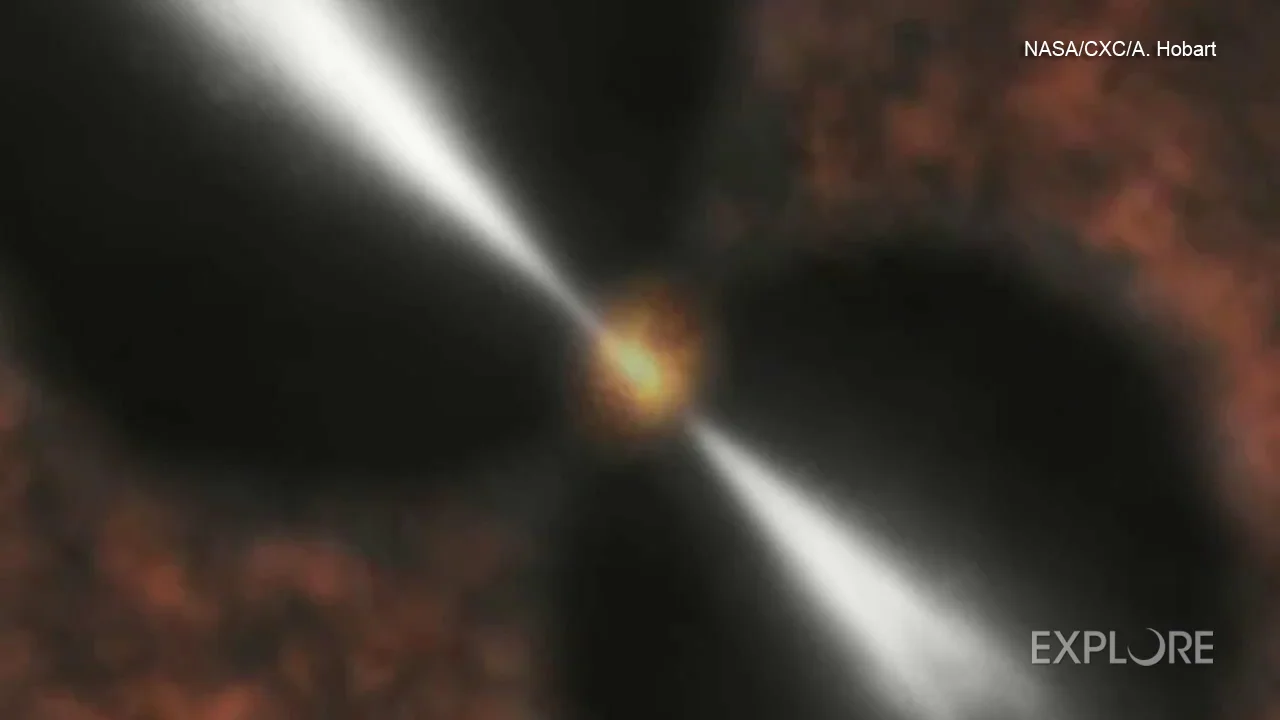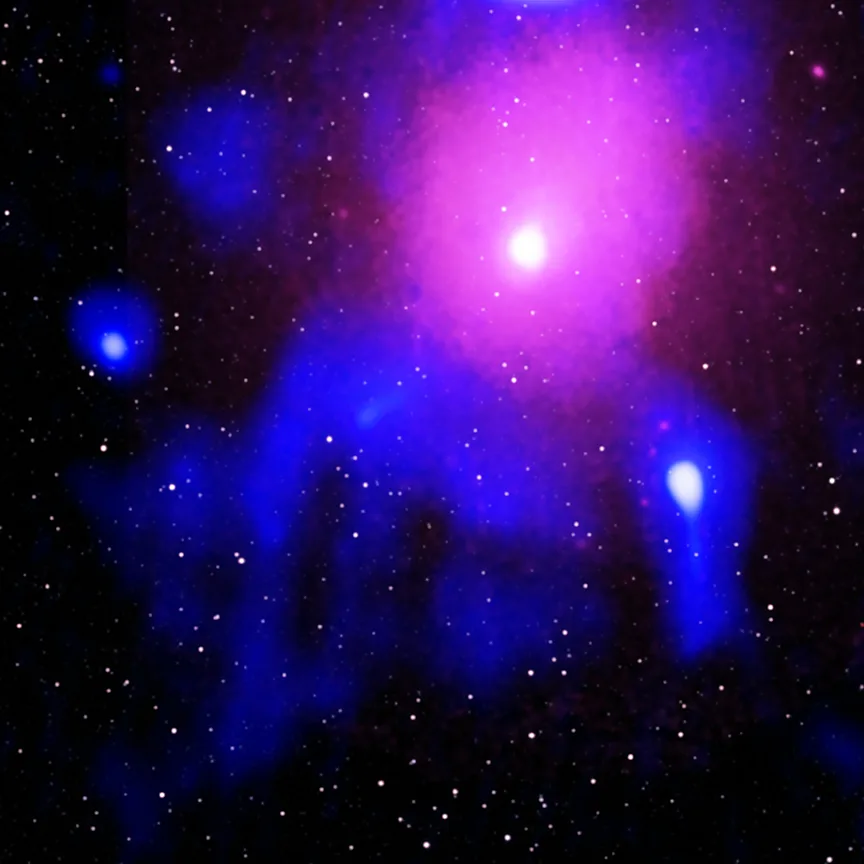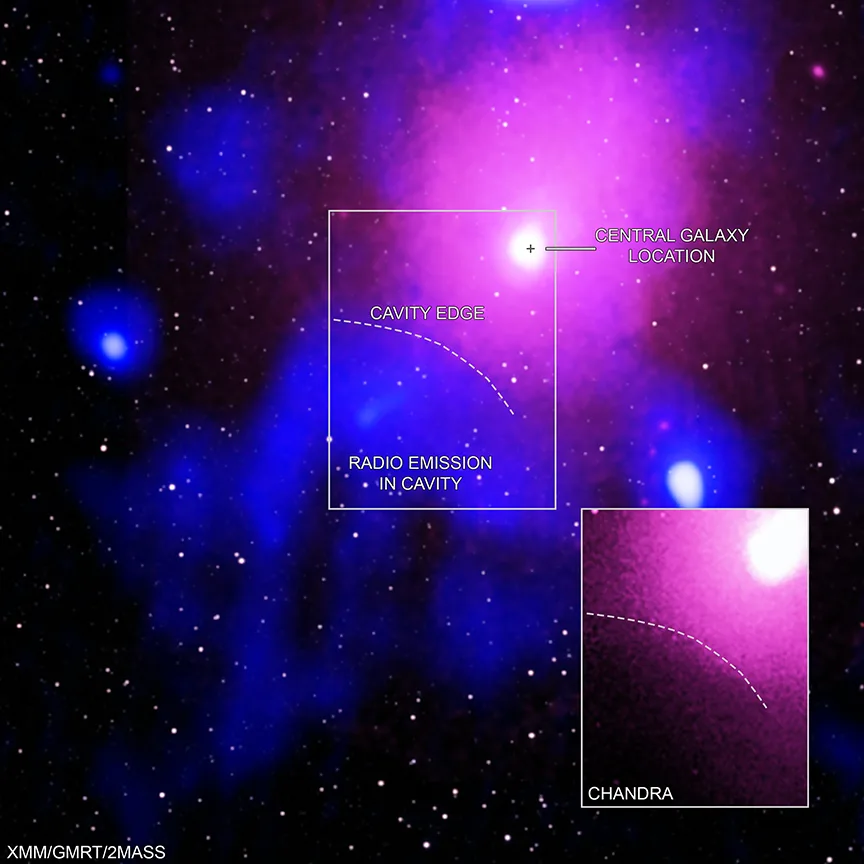
Universe's biggest explosion ever spotted by astronomers
This distant explosion was five times more powerful than the previous record holder
Telescopes scanning the far reaches of space have turned up something remarkable, an immense cavity in the intergalactic medium that could only have been the result of the biggest explosion the universe has seen so far.
Around 390 million light years away, in the direction of the constellation Ophiuchus, there is a collection of thousands of galaxies, known as the Ophiuchus Supercluster. While observing the central portion of this galaxy cluster, astronomers using NASA's Chandra X-ray Observatory noticed the distinctive rounded shape of what could be a bubble or cavity being hollowed out in the gas and dust between the galaxies.
Aiming the ESA's XMM-Newton X-ray space observatory to verify what they were seeing, and then gathering radio data using Murchison Widefield Array (MWA) in Australia and the Giant Metrewave Radio Telescope (GMRT) in India, they confirmed that what they found was evidence for an explosion of incredible proportions.
“We've seen outbursts in the centres of galaxies before but this one is really, really massive," study co-author Melanie Johnston-Hollitt, from the Curtin University node of the International Centre for Radio Astronomy Research, said in a press release. "And we don't know why it's so big. But it happened very slowly—like an explosion in slow motion that took place over hundreds of millions of years."

This composite image of x-ray, radio and infrared data from various telescopes reveals the scene the most powerful explosion ever seen. Credits: X-ray: NASA/CXC/Naval Research Lab/Giacintucci, S.; XMM:ESA/XMM; Radio: NCRA/TIFR/GMRTN; Infrared: 2MASS/UMass/IPAC-Caltech/NASA/NSF
Based on the study by the international team that collected and examined all of this data, the explosion that produced this cavity would have been the biggest astronomers have ever seen - five times more powerful than the previous record-holder.
"In some ways, this blast is similar to how the eruption of Mt. St. Helens in 1980 ripped off the top of the mountain," lead author Simona Giacintucci, of the Naval Research Laboratory in Washington, DC, said in a NASA press release.
"A key difference is that you could fit fifteen Milky Way galaxies in a row into the crater this eruption punched into the cluster's hot gas," Giacintucci added.
WATCH BELOW: THE BIGGEST EXPLOSION IN THE UNIVERSE
What was the culprit behind this incredible explosion? The researchers traced it back to the supermassive black hole at the core of the supercluster's central galaxy.
Tracking the explosion back was no simple task, however, as there was no direct sign to follow. The explosion must have happened long ago, because the jets that would have produced the enormous cavity were nowhere to be seen.

In this artist's impression, an explosion from a supermassive black hole produces jets of high-energy particles, which blow enormous bubbles in the gas and dust around the black hole. Credit: NASA/CXC/A. Hobart
Gathering data at multiple wavelength of light was necessary to make this discovery. The X-ray data from Chandra and XMM revealed the curve of the edge of the cavity. That was the first clue.
What they needed to cinch it, though, was to find out exactly what was inside the cavity. Observations by the Murchison Widefield Array and the Giant Metrewave Radio Telescope found radio waves radiating out from the inside of the cavity. Electrons travelling at nearly the speed of light would emit such radiation, and the jets emitted by a supermassive black hole are known to contain electrons travelling at near the speed of light.
"The radio data fit inside the X-rays like a hand in a glove," Maxim Markevitch, a co-author of the study from NASA's Goddard Space Flight Center, said in the press release. "This is the clincher that tells us an eruption of unprecedented size occurred here."

This view of the core of the Ophiuchus Galaxy Cluster shows a combined view of X-rays, radio and infrared light, revealing the curved edge an immense cavity in the cluster's gas and dust. Credit: X-ray: Chandra: NASA/CXC/NRL/S. Giacintucci, et al., XMM: ESA/XMM; Radio: NCRA/TIFR/GMRT; Infrared: 2MASS/UMass/IPAC-Caltech/NASA/NSF
According to NASA: "One interesting aspect of the Ophiuchus observations is that the densest and coolest gas seen in X-rays is located about 6,500 light years to the north of the central galaxy. This corresponds to a distance on the image that is smaller than the size of the cross. If this gas shifted away from the galaxy it would have deprived the black hole of fuel for its growth, turning off the jets. This gas displacement is likely caused by 'sloshing' of the gas around the middle of the cluster, like wine sloshing around in a glass. Usually the merger of two galaxy clusters triggers such sloshing, but here it could have been set off by the eruption."
The previous record-breaking explosion was detected in 2003, from a galaxy cluster known as MS 0735.6+7421. In that case, observations by NASA Chandra showed two immense cavities, one on each side of the cluster. Each cavity was found to contain very little gas, but they were filled with extremely high-energy electrons that were emitting radio waves.
In that case, the mass of the gas displaced as these cavities were carved out equalled about one trillion Suns, or more than the mass of all the stars in our Milky Way galaxy. This new record breaker in the Ophiuchus Galaxy Cluster is five times more powerful!
Sources: NASA | NASA Chandra | ICRAR











